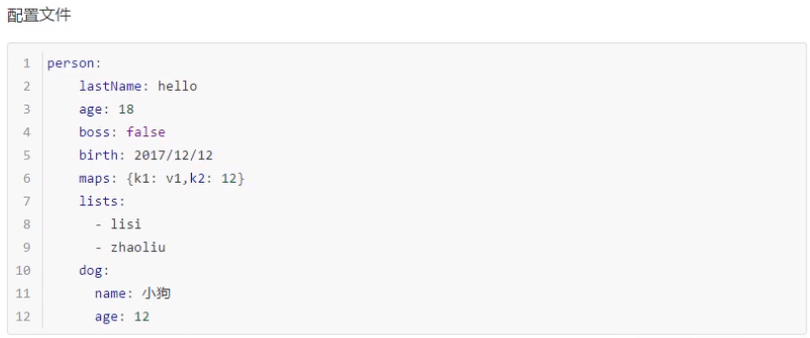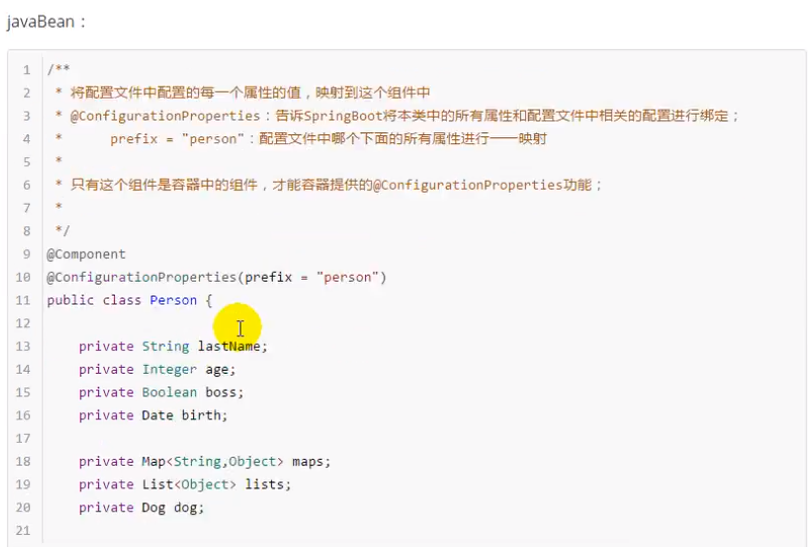1. expression: application.properties or application.yml, which was already agreed upon as vulgar file, do not modify the file name, file to configure the global file.
2. syntax: yml or yaml.
. A basic syntax:
k :( space) v : designates a pair of key-value pairs (there must be a space);
Whitespace indentation to control the level of relations, as long as one is left-aligned data, are of the same level; such as:
server:
port: 8081
path: /hello
And attribute values are case sensitive ;
. B worth writing:
Literal: Common values (numbers, strings, Boolean)
k: v: literally write directly to:
String Default not in single or double quotes;
"": Double quotes: there will not escape the string of special characters; special characters as themselves want to express the meaning of
name: "zhangsan \ n lishi" Output: zhangsan wrap lisi
'': Single quote: YES escape special characters, special characters finally just an ordinary string data
name: 'zhangsan \ n lisi' Output: zhangsan \ n lisi
Default does not use quotation marks, the string can be written in multiple lines start from the second row, there must be a single space indent . Line breaks will be converted to spaces
Object, Map (attributes and values) (key-value pairs):
The relationship between attributes and values of an object to write the next line:: k: v Note indent
Object or k: v way
friends:
lastName: zhangsan
age: 20
Inline wording:
friends: {lastName: zhangsan,age: 20}
Array (List, Set):
It represents an element in the array of values (- with a note indentation, space )
pets:
- cat
- dog
- pig
Inline wording :( note the space)
pets: [cat,dog,pig]
3. The data configuration files, configuration and injected into the class :( lastName property javaBean class in the configuration file can be written last-name as the default springboot - after the first letter in uppercase )



4. Use of the unit tests springboot
